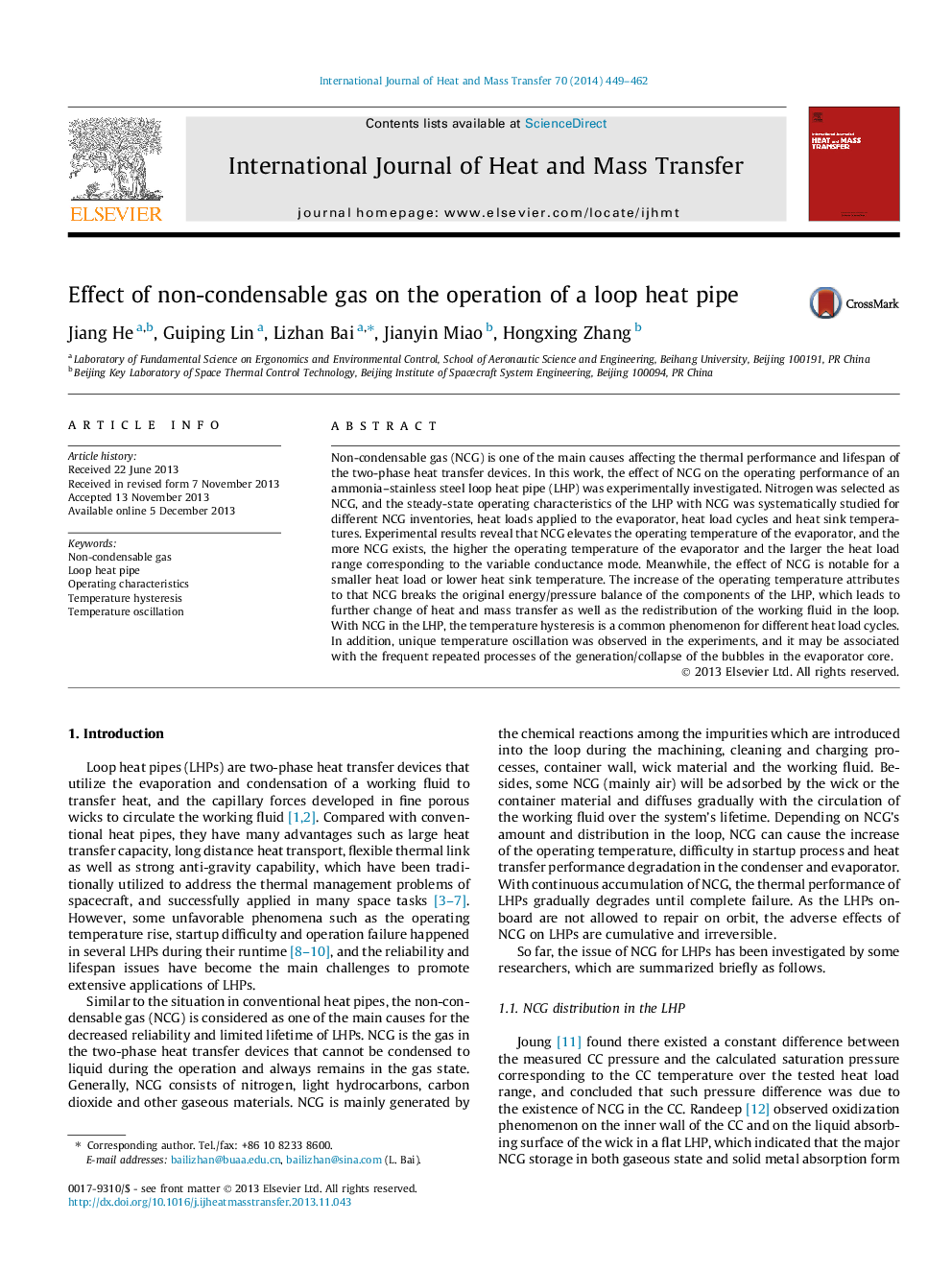| Article ID | Journal | Published Year | Pages | File Type |
|---|---|---|---|---|
| 657610 | International Journal of Heat and Mass Transfer | 2014 | 14 Pages |
Non-condensable gas (NCG) is one of the main causes affecting the thermal performance and lifespan of the two-phase heat transfer devices. In this work, the effect of NCG on the operating performance of an ammonia–stainless steel loop heat pipe (LHP) was experimentally investigated. Nitrogen was selected as NCG, and the steady-state operating characteristics of the LHP with NCG was systematically studied for different NCG inventories, heat loads applied to the evaporator, heat load cycles and heat sink temperatures. Experimental results reveal that NCG elevates the operating temperature of the evaporator, and the more NCG exists, the higher the operating temperature of the evaporator and the larger the heat load range corresponding to the variable conductance mode. Meanwhile, the effect of NCG is notable for a smaller heat load or lower heat sink temperature. The increase of the operating temperature attributes to that NCG breaks the original energy/pressure balance of the components of the LHP, which leads to further change of heat and mass transfer as well as the redistribution of the working fluid in the loop. With NCG in the LHP, the temperature hysteresis is a common phenomenon for different heat load cycles. In addition, unique temperature oscillation was observed in the experiments, and it may be associated with the frequent repeated processes of the generation/collapse of the bubbles in the evaporator core.
